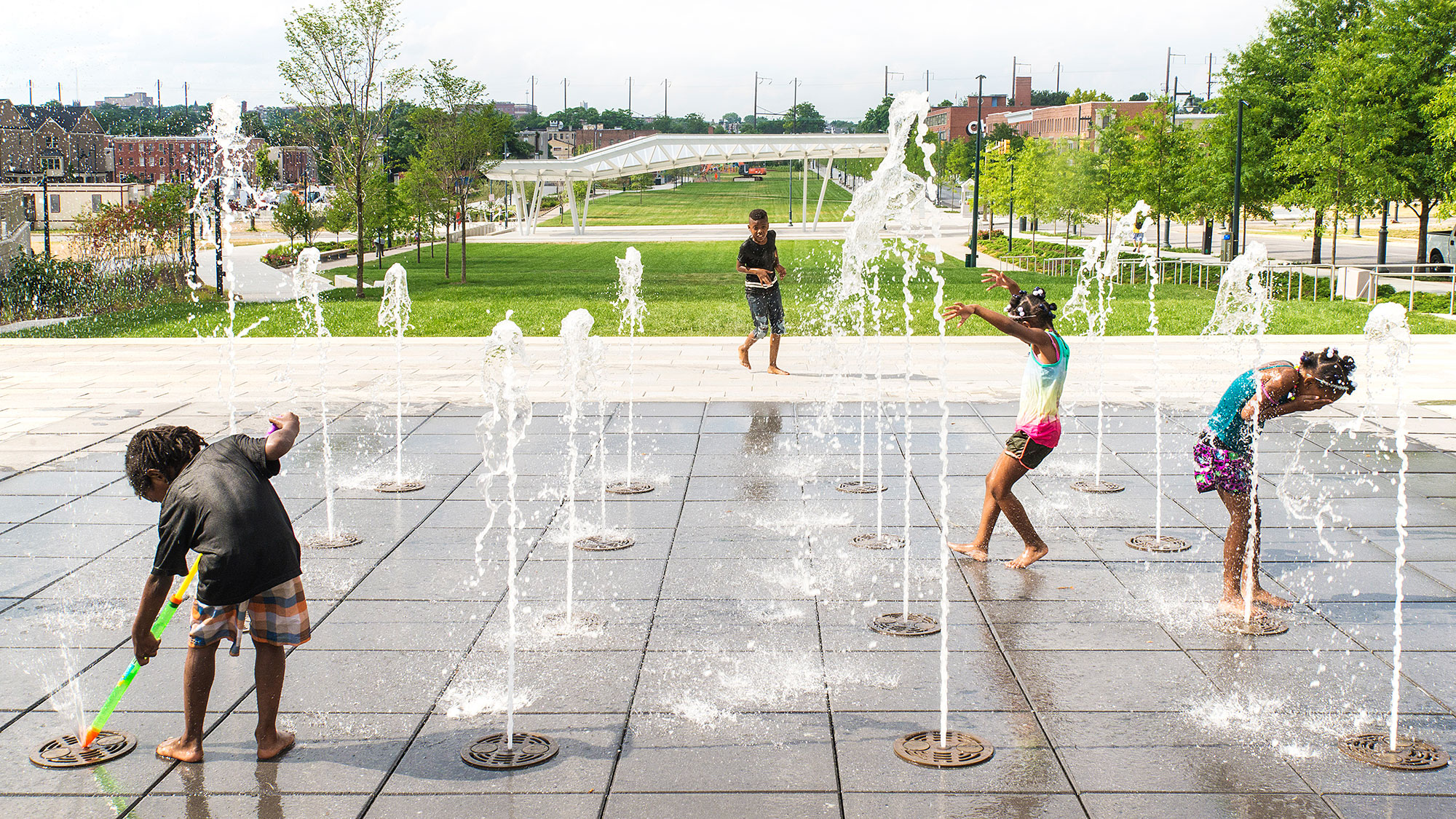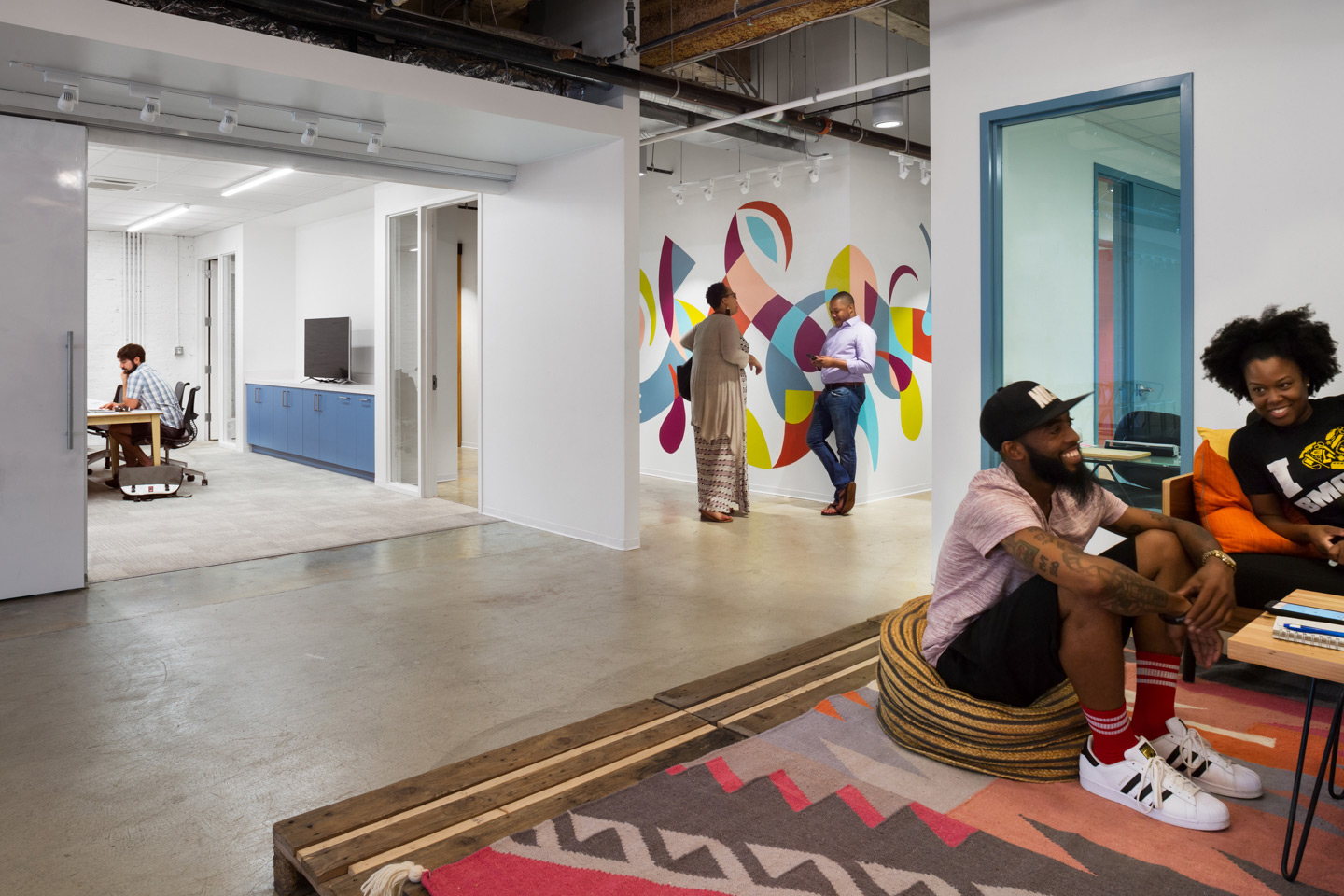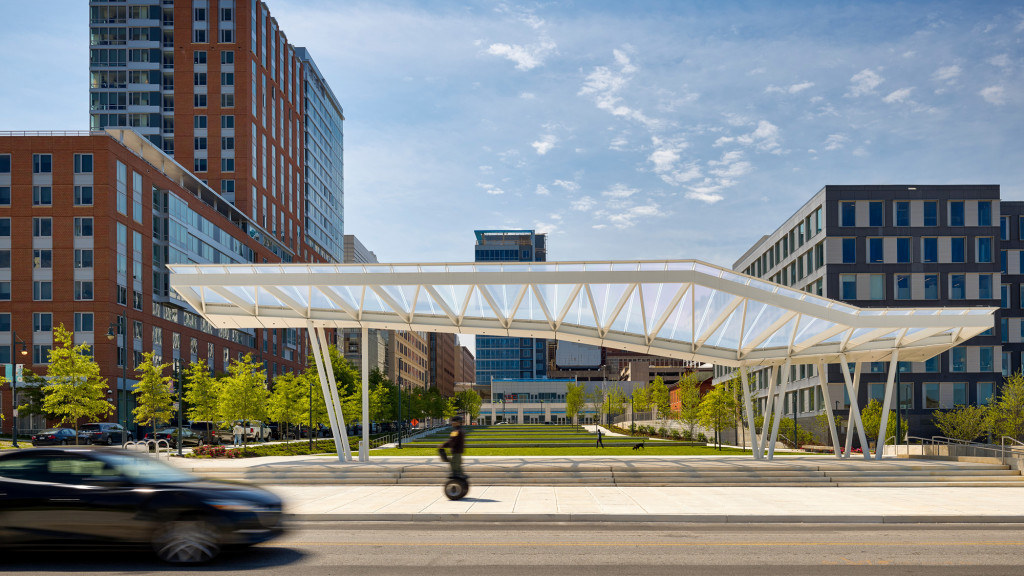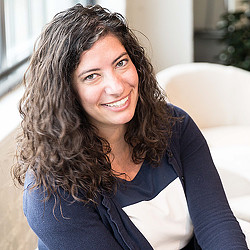Community Engagement in Motion
By Elaine Asal
Public outreach is more than just a checkbox.
If I think back over the course of my career, the projects that stand out to me are the ones where we had a chance to invest time in a community, get to know the people, and create something together.
When we ran a hackathon for Baltimore’s Southwest Partnership with our friends at the Neighborhood Design Center and Impact Hub, the needs from many of our participants were simple: One neighbor wanted to start a community garden and didn’t know how. Another wanted to implement a block captain program. Another wanted to host a party to celebrate H.L. Menken. While each idea was revolutionary in its own small way, but the event became more about creating tangible projects in which strangers and friends could collaborate, building social capital, and learning from each other.
At its root, this is what community engagement should be about: galvanizing a coalition with a vested interest in their neighborhood, street, house, or public space, and mobilizing them towards a shared vision. Such a shared vision would be unimaginable without the engagement itself; rather than supplementing the project, it drives the project. Intentional and proactive engagement builds both a future user base and wider public support.
Some may perceive public engagement as an obstacle for city agency approvals, or have concerns that extensive outreach will stifle design potential and slow the process. We have found that building relationships and trust through the design and construction process serves to enrich and enhance the outcome. In a world seeking differentiation, providing the time and platforms for that to take place is the difference between authenticity and artifice.

For large projects that serve the public good, earning public support is essential. Hospitals, schools, and major transportation hubs have presence and permanence in cities that goes beyond their explicit functions. They are mainstays for local neighborhoods and cultures. They take hold for decades, not just months or years. Redevelopment of such iconic and locally impactful sites requires a deep dive into public discourse to accurately pin down civic priorities and needs.
This was true of Eager Park, the five-and-a-half acre park in East Baltimore that serves as a recreational hub between a new BioPark, the Johns Hopkins medical campus, and the neighboring community. Gensler’s outreach process comprised a series of stakeholder and public meetings, social media campaigns, neighborhood walking groups, as well as interactive community visioning sessions.
Transit-anchored developments in particular reflect this increased attention to community engagement. No longer just rail stations, major transit stations are now regional hubs for busses, taxi services, ridesharing, e-scooters, and a number of growing and intersecting modalities that will continue to redefine how people get around their cities.
To launch Baltimore’s Penn Station redevelopment, our team held a large community town hall and solicited feedback in a series of roundtables for more than 200 people. Over 20 facilitators helped lead table discussions that resulted in a publicly available report reflecting the collective input from those conversations and setting the foundation for design priorities moving forward.
Communication styles are as diverse as perspectives, so a range of meeting types encourages a wider range of voices to be heard. Comfort and setting matters, too: for Eager Park, public meetings were held in accessible and familiar locations such as local churches and the senior living center. In planning any outreach, we must consider a wide range of channels that allow information to be shared and feedback given in a way that meets the neighborhood where they are. Town halls, open houses, intimate roundtable discussions, and social media can be meaningful tools, but they fare better when used in tandem.

When designing the new workspace of Impact Hub Baltimore — a coworking organization dedicated to solving some of the city’s most intractable problems and building a “radically collaborative” world — we invited a wide cross section of community stakeholders and held additional sessions open to the public.
Three years after completing the project, Impact Hub’s 2018 annual report makes it clear that the workspace design continues to bolster their mission: 95% of members report improved quality in the services they deliver, and 86 percent report better access to working infrastructure with Impact Hub membership — all while the average member reports juggling around 2.8 professional identities. What’s more: with 60% women and 57% minority members, the space and the community it hosts reflects the diversity of the city.
For Eager Park, we measured success by the diversity of users we see in the park every day: Johns Hopkins graduate students playing frisbee alongside families that have lived in this neighborhood for decades, next to seniors planting in the community garden. For communities mired in historic divides, these small victories speak to the long-term goals and the importance of building trust into the design process.
Community engagement operates along a spectrum: from compliance and risk reduction at one end, to forming an integral part of the project vision at the other. While the role of designers has historically taken on a more apolitical sensibility, we are, in reality, deeply enmeshed in political processes. When designing for the public good and for the basic services that enable citizens to navigate their environments, we must act as bridges between stakeholders — and the more we intertwine our expertise with their vision, the better.

